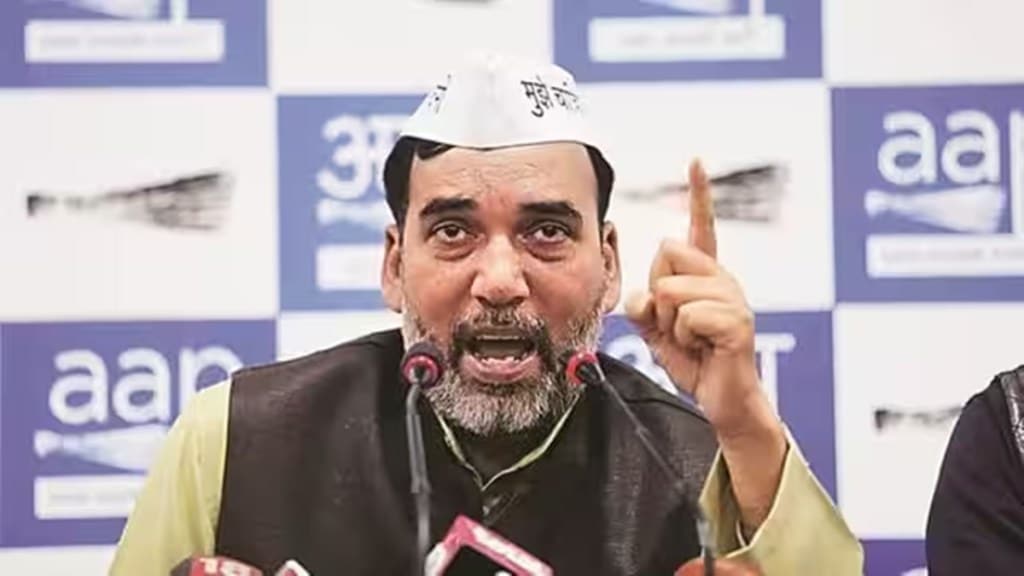Delhi’s Environment Minister Gopal Rai on Tuesday wrote a letter to Union Minister Bhupender Yadav requesting a meeting with all environment ministers in the National Capital Region (NCR), which comprises the states of Haryana and Uttar Pradesh, to prepare an action plan to tackle the issue of pollution during winters.
He outlined seven key recommendations aimed at mitigating environmental challenges in NCR.
Also Read:Delhi Pollution: AQI at 260 in ‘poor’ category, min temp 2 notches above normal
“In the winter, pollution levels turn severe. The Delhi government is taking various measures under the winter action plan, such as an anti-dust campaign and efforts to control pollution levels at hotspots. However, until the sources of pollution in the NCR states are not controlled, these steps being taken will not be effective,” read Rai’s letter.
A report from the Centre for Science and Environment stated that “31% of the pollution in Delhi originates within the city itself, while 69% stems from sources of pollution in NCR states,” as mentioned by Rai.
Also Read:Delhi pollution: Centre’s action plan to check air pollution in NCR comes into effect
He requested Yadav, who is the Union Minister for Environment, Forest and Climate Change, to convene a meeting of the environment ministers of the NCR to prepare an action plan on these points so that the level of pollution can be reduced.
The environment minister mentioned that pollution levels have been reduced by 30% due to certain measures, and also stated the need for coordinated efforts with neighbouring states to control pollutants, as 69% of Delhi’s pollution originates from them.
As Delhi’s Air Quality Index (AQI) entered the “poor” category, certain restrictions on vehicular traffic entering Delhi are enforced to mitigate pollution during peak periods under the Graded Response Action Plan (GRAP).
Here is the list of recommendations :
- Mandate CNG or Electric Vehicles for public transport: Public transportation from NCR to Delhi should exclusively use Compressed Natural Gas (CNG) or electric power to reduce the carbon footprint.
- Ban stubble burning in NCR: Strict regulations are needed to prevent stubble burning in the NCR region, addressing this harmful agricultural practice.
- Convert Industrial Units to Natural Gas: Industrial units in NCR states still using polluting fuels should be converted to piped natural gas.
- Upgrade brick kilns: Heavily polluting brick kilns in NCR states should adopt zig-zag technology to reduce pollution.
- Ensure reliable electricity supply for housing societies: Housing societies in NCR states should have a stable electricity supply to reduce reliance on diesel generators and promote cleaner energy sources.
- Complete firecracker ban similar to Delhi: NCR states should enforce a comprehensive ban on firecrackers, similar to Delhi, to mitigate air quality deterioration, especially during festivals.
- Regulate Non-Destined Vehicles on Peripheral Expressways: State governments should direct non-destined vehicles to use Eastern and Western Peripheral Expressways from their initial entry points to reduce traffic congestion and pollution in residential areas.
Delhi’s Air Quality Index (AQI)
Delhi’s AQI was recorded in the ‘moderate’ category at 9 AM on Wednesday and the minimum temperature settled at 17.3 degrees Celsius, a notch below normal. The city witnessed poor air quality on Sunday and Monday. It improved slightly afterwards as gusty winds accompanied by rains lashed parts of the national capital on Monday night.
According to the AQI scale, air quality ranging from 0 to 50 is categorized as “good,” 51 to 100 as “satisfactory,” 101 to 200 as “moderate,” 201 to 300 as “poor,” 301 to 400 as “very poor,” and 401 to 450 as “severe.” When the AQI surpasses 450, it is deemed to be at the “severe+” level.
